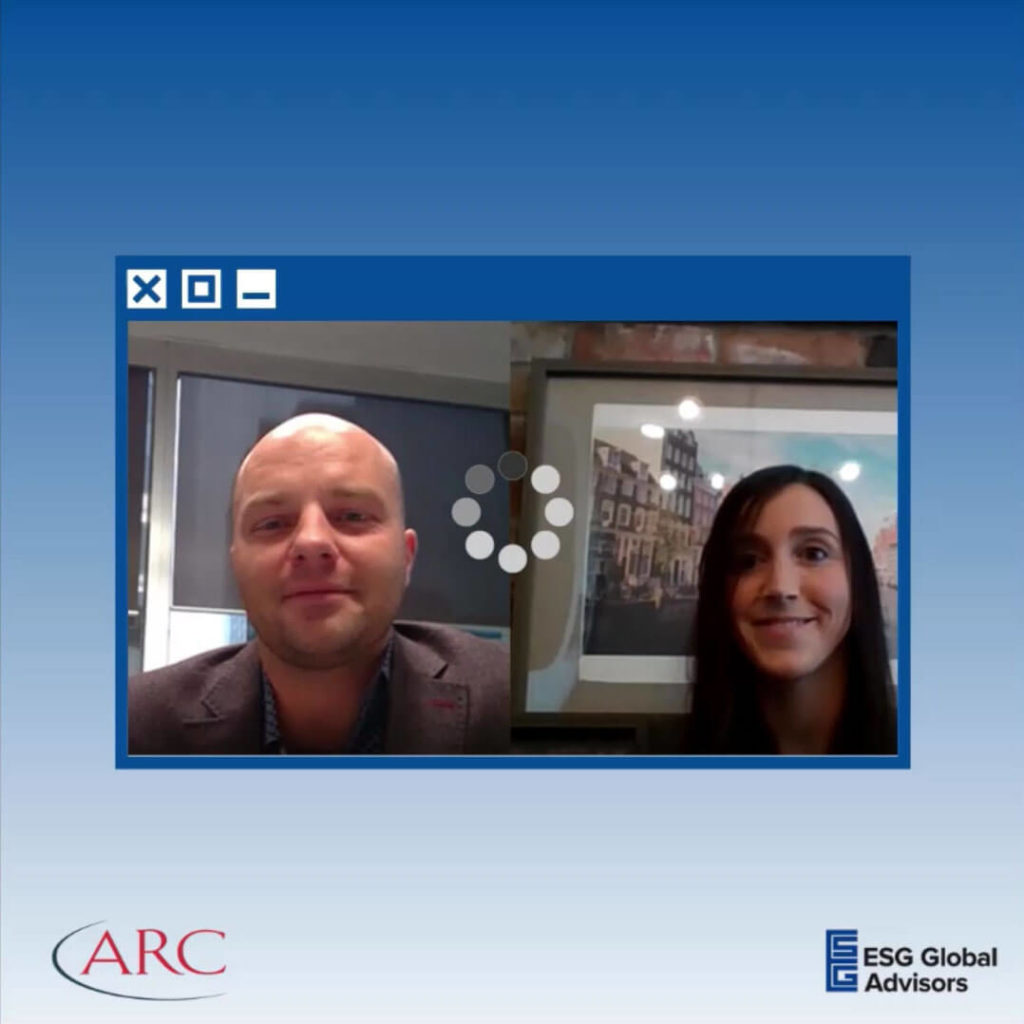Office
First Canadian Place
100 King Street West
Suite 5600
Toronto, Ontario
M5X 1C9
Canada

ESG Global Advisors had the pleasure of interviewing one of our clients Cory Beliveau from ARC Resources (ARC), a leading Canadian upstream oil and gas producer. Cory is the Manager of the Health, Safety, Environment & Regulatory (HSER) team and is responsible for leading the company’s Environmental, Social, and Governance (ESG) reporting. ARC Resources recently released their 2020 ESG Report and the report sets a new bar for investor-focused ESG disclosure.
In this video interview, ESG Global’s Sarah Keyes is in conversation with Cory from ARC to discuss ARC’s recent accomplishments, ESG strategy, the 2020 ESG Report, and the company’s overall ESG journey. Cory shares great insights and practical tips for companies that are looking to enhance their current ESG reporting.
ESG Global Advisors is pleased to have supported ARC Resources on this ESG report and we are excited to continue to follow the company’s ESG journey. If you are interested in learning about how ESG Global Advisors can support your company’s ESG reporting, contact us.
Below is a summary of the video interview.
Evolving from a sustainability report to an ESG Report provided a couple of key benefits. First, this allowed ARC to provide a greater focus on key factors that could be considered financially material to the organization, enabling a focus on long-term value creation. Second, we believe this approach has greater alignment with the ESG disclosure expectations of our investors and other capital market participants.
ARC’s approach to conducting its ESG materiality assessment involved gathering feedback from key subject matter experts within the organization and the company’s investors. We also utilized the Sustainability Accounting Standards Board (SASB)’s Oil and Gas Exploration and Production Standard to help identify key ESG factors that could be considered financially material to the organization.
The 2020 ESG Report includes a climate change section that is aligned with the recommendations of the Task Force on Climate-related Financial Disclosures (TCFD). Why was it important for ARC to provide this type of climate-related disclosure and what were some of ARC’s key learnings?
ARC has a strong track record of industry-leading emissions performance, sound governance practices, and robust risk management protocols. Aligning the report with the TCFD recommendations provided enhanced transparency on ARC’s climate-related risks and opportunities and allowed the company to highlight its long-term resiliency under different forward-looking climate change scenarios.
ARC’s first TCFD-aligned disclosure leveraged the disclosures provided in the company’s annual CDP reporting, which was efficient given that the CDP Climate Change Questionnaire is aligned to the TCFD recommendations. Adding TCFD disclosure into the 2020 ESG Report created stronger alignment in ARC’s external disclosure to investors.
Our HSER team has a unique advantage being integrated within ARC’s operations department, fostering a close connection to the day-to-day functioning of the business. To facilitate internal collaboration on wide-reaching ESG factors, ARC has established a multi-disciplinary steering committee with representation from various facets of the business, including accounting, human resources, investor relations, HSER, and stakeholder relations. This way, ARC can gather multiple viewpoints on key ESG factors to ensure that our ESG approach remains balanced and responsive to the concerns of our investors, employees, contractors, communities, land-owners, and other stakeholders.
A helpful exercise in preparing the 2020 ESG Report was working with third-party subject matter experts to complete a comprehensive gap analysis against the SASB, GRI, and TCFD disclosure frameworks to identify opportunities for enhanced disclosure to investors and other stakeholders. This gap analysis provided a practical roadmap to guide the company’s reporting efforts, including identifying key ESG performance data to be disclosed.
One of the challenges and opportunities for the sector is consistency in reporting. I strongly recommend that companies getting started on their ESG reporting leverage the SASB framework and focus on the organization’s financially material ESG factors. The SASB Standards provide quantitative reporting metrics and qualitative disclosure to create ESG disclosure that meets the needs of the investment community.
If you are interested in learning about how ESG Global can support your company’s ESG reporting, contact us.
This document is for general information purposes only and is not intended to provide legal, accounting, investment, financial or other advice.